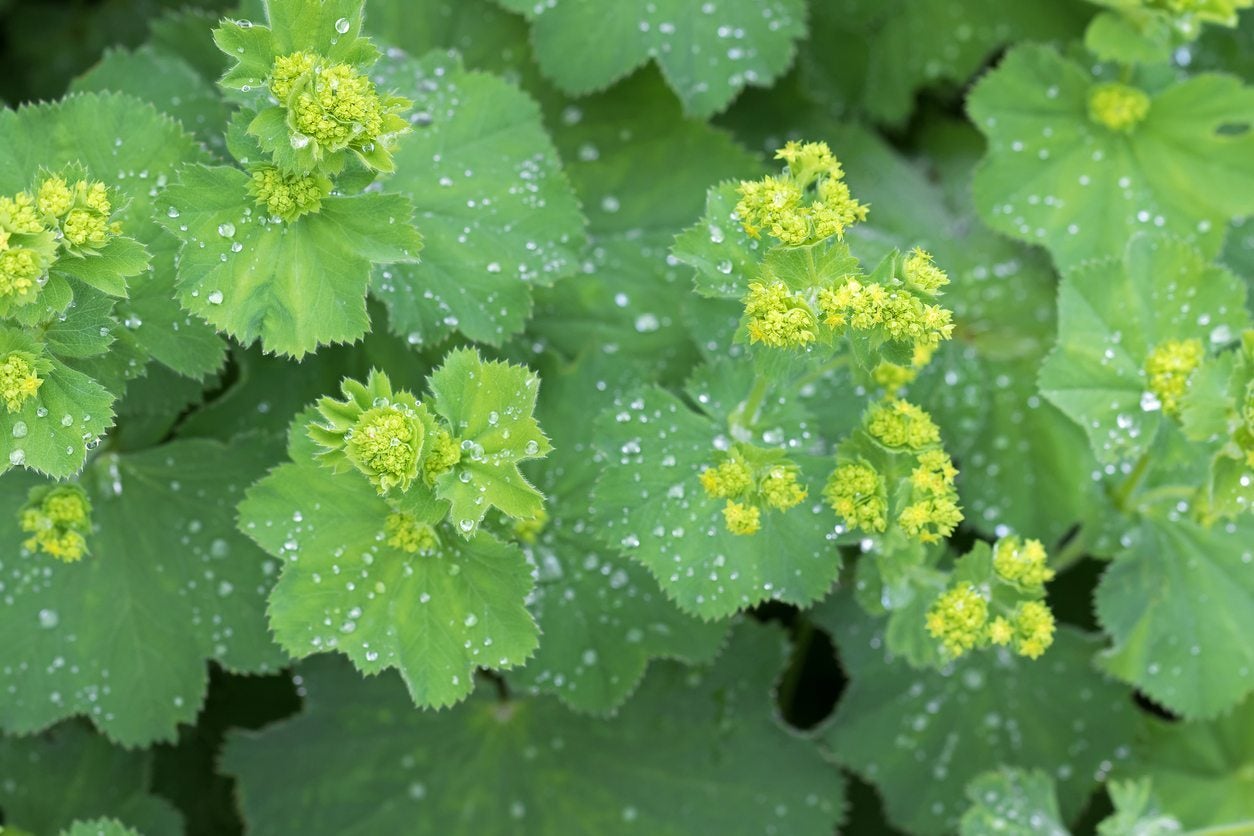What are polyps?
These tumors appear in the uterus, growing from endometrial cells, as well as in the neck of the organ. They have a rounded "cap" and "leg" through which it makes contact with the mucous membrane. It makes it look like a mushroom. Appear in women of all ages from the onset of puberty. Especially often they are found in the premenopausal period when the probability of disturbances in the reproductive organs is greatest.
The diameter of the cap is usually no more than 1 cm, but neoplasms up to 3 cm in size are formed in the singular (singular) or in the form of a whole "colony" (plural). Have a benign nature, degeneration in a malignant tumor occurs in about one woman in a hundred.
What are the symptoms of these diseases?
Symptoms for uterine polyps are the same as in the presence of the diseases that caused them. These include:
- Uterine bleeding of varying intensity (from small blood impurities in the intermenstrual discharge to dangerous bleeding). The degree of manifestation does not depend on the type of polyp, but only depends on the degree of pathological changes in the cavity and the cervix.
- Strengthening of menstrual bleeding, due to the fact that the structure of the vascular network is disturbed.
- The emergence of painful sensations during sexual contact. This symptom should be taken very seriously, especially if it seems systematic, the pain is accompanied by bloody discharge.
- The appearance of blood in the discharge after menopause. This is due to damage to the polyps. During this period, it is especially important to be examined, as the formation of a malignant tumor can cause bleeding.
- The appearance of signs of anemia from constant blood loss. Such symptoms include pallor of the skin, headache, nausea, dizziness, and general weakness.
- Spasmodic abdominal pain associated with exposure to the surrounding tissue of the polyp.
The first signs by which one can suspect the appearance of such a pathology is a violation of the regularity of the arrival of menstruation, an increase in their abundance and pain. If the polyp is large enough, has a long leg, symptoms of complications can arise. First of all, it is a strong pain where the leg is turned, the temperature rises when an abscess occurs in the area of damage to the polyp, and bleeding occurs when the polyp is detached from the wall.
Do you know the various types of uterine polyps?
Cervical polyps are located on the surface of the cervical canal. In the body of the uterus, they are usually formed in the area of the bottom, in the corners and folds.
The composition of the cells that make up the polyp distinguishes the following types of tumors:
- Glandular. Formed from cells of the glands in the uterine lining. They resemble cysts filled with fluid. Endometrial hyperplasia of this type usually occurs in young women, because the growth and updating of the uterine lining in the uterus is more active there.
- Uterine fibroids. Develop fibrous tissue that separates the inner and outer layers of the uterine lining. Such polyps are more common in women over 40 years of age.
- Glandularly fibrous. The body of such a polyp consists of cells of both types. Similar tumors are found in women after age 35.
- Adenomatous. They consist of glandular cells with an atypical structure that can degenerate into malignant. The presence of such polyps is considered a precancerous condition and represents the greatest danger.
- Placenta. They are formed in the case of incomplete removal of the placenta after childbirth or miscarriage, abortion, as well as missed abortion. The appearance of such polyps is fraught with uterine bleeding and infertility.
If you are seeking for a solution to your problem, below is the African herbal plant which helps to shrink uterine polyps.
AFRICAN HERBAL TREATMENT FOR UTERINE POLYPS
Do you have difficulties in getting pregnant and your gynecologist diagnosed you with uterine polyps? Don’t bother, we have the "natural" solution for you. Our tisane is very efficient in getting rid of the uterine polyps without any side effects.
The herbal tea we are proposing to you is to definitely get rid of your uterine polyps on a long term basis by avoiding you to undergo any kind of surgical operations. This remedy is 100% natural i.e it contains no additives or chemicals that will alter your physical or mental health. Our treatment has proven its efficiency by curing many of our patients.
Would you like to get rid of these uterine polyps naturally, permanently with no side effects and get pregnant rapidly? If yes, then you are at the right place!!!
You just have to click here!!! OR CALL/WHATSAPP +22990431725 we deliver worldwide!!
The 4 most important medicinal herbs for women and their applications
Of course, there are many medicines for women’s ailments, but these often have negative side effects. Women in particular mostly look for gentle, natural alternatives to the chemical cocktail. In this article I introduce you to four wild herbs that have long played an important role in gynecology.
You can collect wild herbs in nature or grow them easily in your garden. This gentle, but definitely medicinal medicine doesn't cost you a cent. I have got into the habit of always keeping a stock of herbs, so I have them at hand in every season.
Lady's mantle

Lady's mantle is probably the most comprehensive lady's herb, it helps with many ailments and can be used universally. It has a general regulating effect on female hormone levels and can have a positive effect on mood fluctuations during the period and also on symptoms during the menopause.
In the case of painful, absent or excessive menstruation, lady's mantle has a balancing and relaxing effect. He can also help with premenstrual syndrome. For the treatment of Flour (White River) Lady's mantle is also well suited.
Lady's mantle has a beneficial effect on ovulation, which is why it is used when there is no desire to have children. Lady's mantle also helps the ice to nest in the uterus and prevents miscarriages. It can also have a healing effect in the case of ovarian weakness and inflammation of the ovaries.
Mugwort
/GettyImages-121751640-c1bee80fc3724ecf9c842c262539b339.jpg)
Mugwort is another important herb. The ancient Greeks even praised it as the most important plant in gynecology, its positive influence comes primarily from its strong warming properties.
Mugwort helps with abdominal pain during the period and promotes ovulation in the absence of menses. After years of hormonal contraception, mugwort can help menstruate regularly.
Mugwort stimulates labor, its antispasmodic properties can also help with childbirth. Mugwort also helps with menopausal symptoms and premenstrual syndrome. For a tea, pour 250 ml of boiling water over a teaspoon of the herb and let it steep for three minutes. Drink a maximum of three cups a day.
Raspberry leaves

A tea made from raspberry leaves is one of the classics for birth preparation. It has a loosening effect on the uterus and cervix, which makes it softer and less often requires an episiotomy. However, raspberry leaf tea can also cause contractions, which is why it should only be drunk at the end of pregnancy.
Raspberry leaves have a regulating effect on the menstrual cycle and relieve menstrual problems. Before a planned pregnancy, raspberry leaf tea helps build up the endometrium.
For a tea, pour 250 ml of boiling water over two teaspoons of raspberry leaves and strain them after ten minutes. It should not be drunk in the event of premature labor or opening of the cervix.
Yarrow

Yarrow counts according to Hildegard v. Bingen also to the warming plants. So it is particularly helpful for women suffering.
Yarrow has a balancing effect when menstruation is too strong and too long, as well as weak and irregular. It also has a relaxing effect on menstrual pain. Vaginal douches and yarrow baths can help with vaginal thrush.
The yeast's hemostatic and wound healing effects can be used after birth to heal injuries. Furthermore, it strengthens the connective tissue and helps with menopausal symptoms. Bean baths with yarrow can also help with cystitis and coldness in the lower abdomen. Boil 100 g of herb with 1.5 l of water, strain after 20 minutes, and add to the bathwater. For a tea, pour 200 ml of boiling water over a teaspoon of the herb and let it steep for five to ten minutes.
To get more information about this natural product You just have to click here!!! OR CALL/WHATSAPP +22990431725 we deliver worldwide!!


